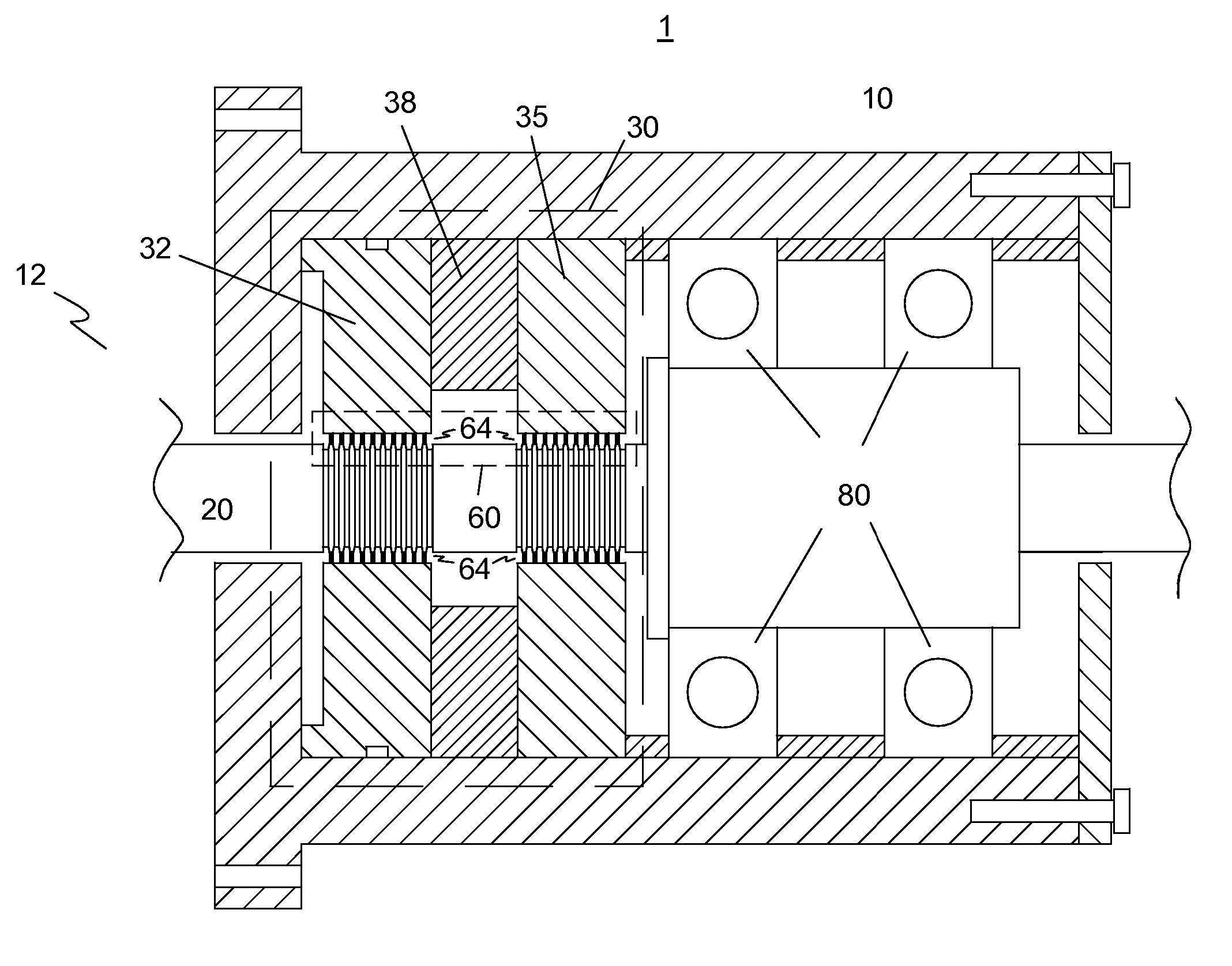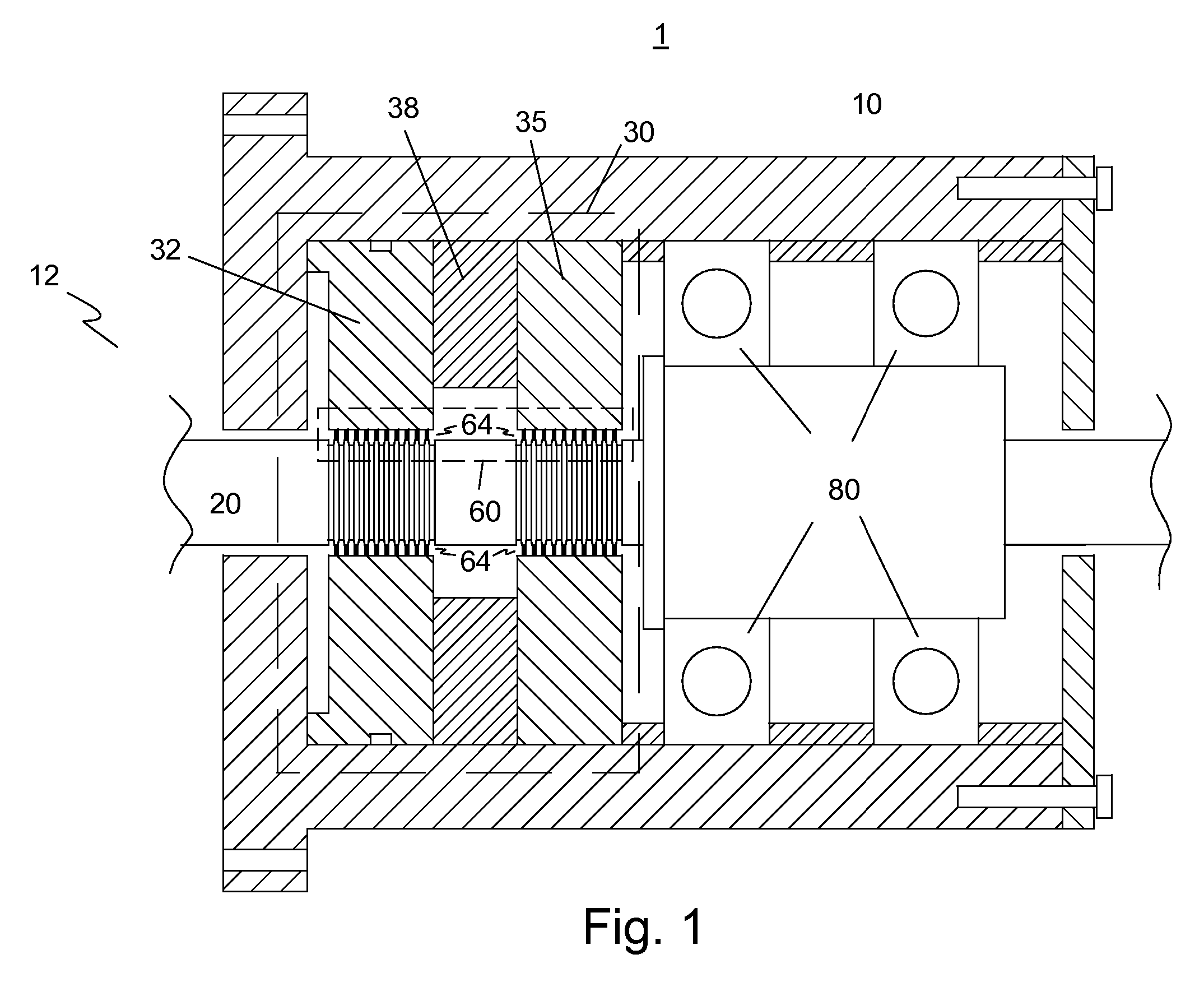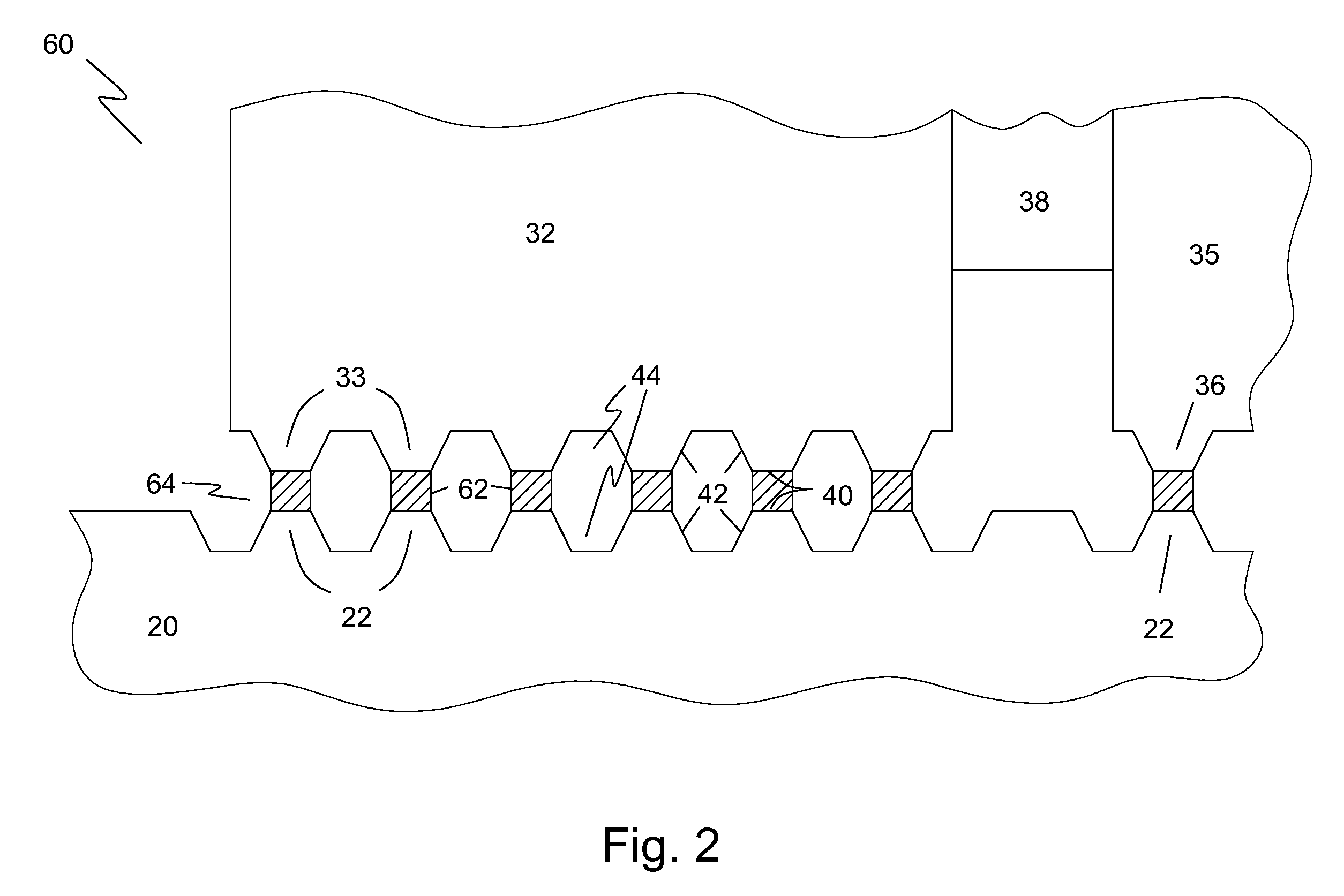Magnetic Fluidic Seal with Improved Pressure Capacity
a magnetic fluid and pressure capacity technology, applied in the direction of engine seals, shafts and bearings, bearing components, etc., can solve the problems of reducing the size of modern applications, the need for smaller magnetic fluid seals having the same pressure capacity, and the upper limit of the magnetic system, so as to reduce the choking effect, increase the pressure capacity of the seal, and increase the pressure capacity
- Summary
- Abstract
- Description
- Claims
- Application Information
AI Technical Summary
Benefits of technology
Problems solved by technology
Method used
Image
Examples
Embodiment Construction
[0039] The preferred embodiment of the present invention is illustrated in FIGS. 1-3, 6, 8, and 9. FIG. 1 shows one embodiment of the present invention incorporated into a vacuum rotary seal 1. A rotary seal housing 10 supports a rotary shaft 20 that is inserted into a vacuum chamber 12. Rotary seal housing 10 is nonmagnetic and includes a ring-like magnetic assembly 30. Magnetic assembly 30 is adapted to have a multi-stage seal 60 between rotary seal housing 10 and the rotary shaft 20. Magnetic assembly 30 includes a first pole piece 32, a second pole piece 35 and a permanent magnet 38 between first pole piece 32 and second pole piece 35. First pole piece 32 and second pole piece 35 are magnetically permeable as is the rotary shaft 20. Rotary shaft 20 is supported by high-precision, lubricated rolling element bearings 80 to maintain concentricity within the inside diameter of magnetic assembly 30. A small radial gap, or annulus, 64 is created between rotary shaft 20 and first pole ...
PUM
 Login to View More
Login to View More Abstract
Description
Claims
Application Information
 Login to View More
Login to View More - R&D
- Intellectual Property
- Life Sciences
- Materials
- Tech Scout
- Unparalleled Data Quality
- Higher Quality Content
- 60% Fewer Hallucinations
Browse by: Latest US Patents, China's latest patents, Technical Efficacy Thesaurus, Application Domain, Technology Topic, Popular Technical Reports.
© 2025 PatSnap. All rights reserved.Legal|Privacy policy|Modern Slavery Act Transparency Statement|Sitemap|About US| Contact US: help@patsnap.com



